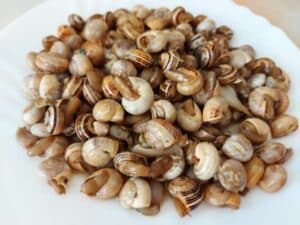Aortic stenosis is a condition in which the heart’s aortic valve narrows, making it difficult for blood to flow from the left ventricle to the aorta and, consequently, to the rest of the body.
Over time, this can lead to serious symptoms such as shortness of breath, chest pain, and even heart failure.
Risk factors for aortic stenosis:
- Older age: Aortic stenosis is more common in older people, especially due to calcification of the aortic valve over the years.
- Heart disease: High blood pressure and rheumatic heart disease (streptococcal infection that affects the heart valves) are important factors.
- Family history: There may be a genetic predisposition to heart disease.
- Dyslipidaemia: High levels of cholesterol, especially LDL, contribute to the formation of plaque on the valves.
- Smoking and a sedentary lifestyle: These habits increase the risk of cardiovascular diseases, including aortic stenosis.
Therapeutic interventions:
– Clinical monitoring and control: For mild or asymptomatic cases, regular monitoring with echocardiography is necessary to observe the progression of the disease.
– Medication: There are no medications that cure aortic stenosis, but they can be used to control symptoms and associated complications, such as heart failure or high blood pressure. Example: diuretics or beta blockers.
– Surgical intervention: For more severe cases, where symptoms are disabling or there is a risk of fatal complications, surgery may be necessary. Options include:
- Aortic valve replacement (indicated in severe stenosis): The affected valve is replaced with a mechanical, biological, or tissue valve.
- Balloon aortic valvuloplasty: In some cases, it is possible to perform a less invasive intervention to dilate the valve using a balloon, especially in patients at high surgical risk.
- Minimally invasive treatment: In recent years, techniques such as Transcatheter Aortic Valve Implantation (TAVI) have emerged, which is a less invasive alternative for patients who cannot undergo open surgery.

These therapeutic interventions aim to improve blood flow, relieve symptoms, and prevent serious complications such as congestive heart failure and stroke. If you or someone you know is experiencing aortic stenosis, it is essential to work with a cardiologist to determine the best treatment plan.
TAVI is also performed using a catheter, which is inserted into an artery (usually the femoral artery in the groin region, but it can also be done via other routes, such as the subclavian or apical route).
The catheter is advanced to the aortic valve, replacing it with a biological one and where a stent is placed. The device is compressed inside the catheter and, once correctly positioned in the diseased aortic valve, the new valve is decompressed and implanted in place.
The new valve pushes the diseased valve out of the way and takes over the job of regulating blood flow from the left ventricle to the aorta. After implantation, the functioning of the new valve is checked using imaging tests (usually echocardiograms). Once the correct position and function are confirmed, the catheter is removed.
Operating for almost 24 years, the Cardiovascular Intervention Unit at Hospital Particular in Alvor has a curriculum that includes thousands of interventions and procedures, such as minimally invasive cardiovascular intervention techniques, catheterization, angioplasty, and transcatheter implants of the aortic and mitral valves.
Articled submitted by the HPA Group
























